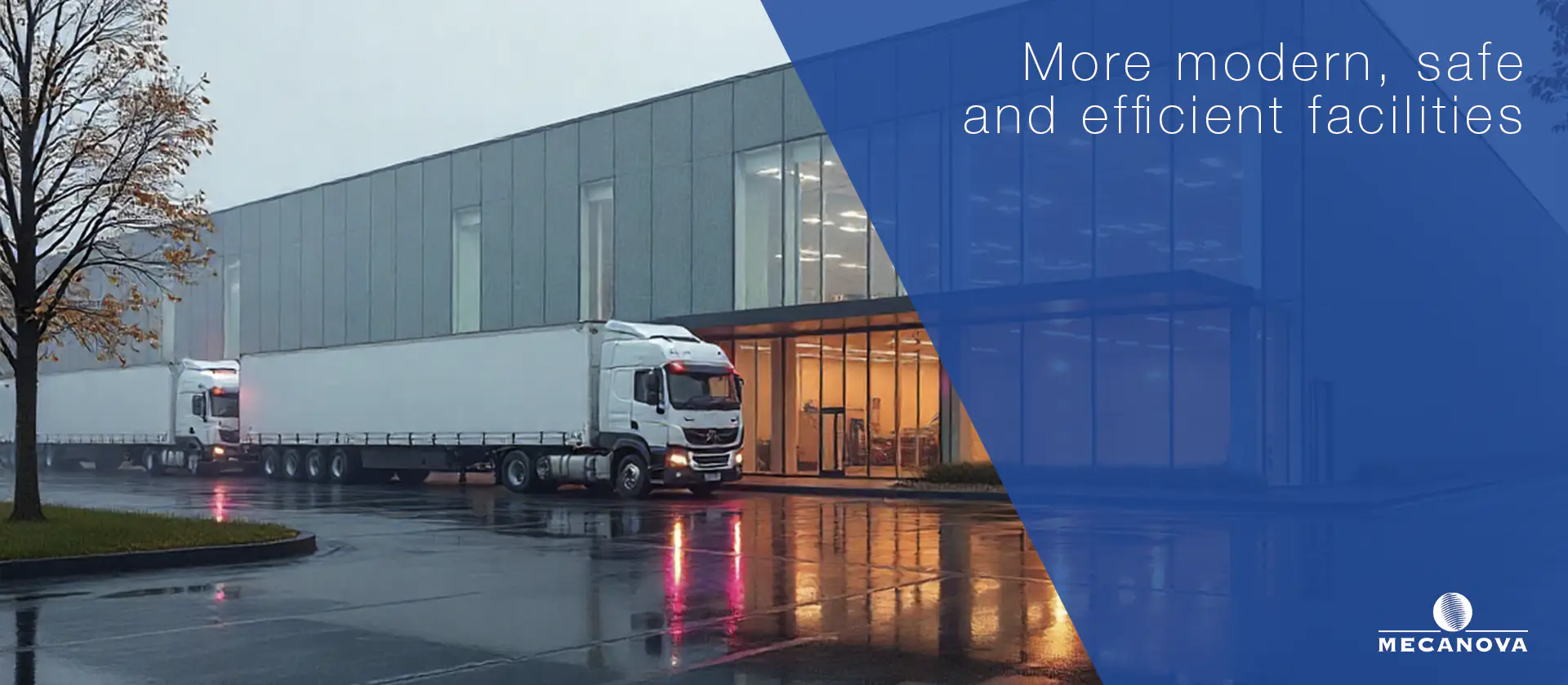The meat sector is at a turning point. The pressure to produce more, better, and with greater transparency is forcing slaughterhouses to take a decisive step toward modernization. Modernization slaughterhouses is becoming essential to meet these demands. Pursuing options such as a modernization feasibility study is no longer an optional investment or a luxury for large groups, but a vital necessity for the survival and competitiveness of any slaughterhouse.
The reason? The world has changed: consumers are more demanding, regulations are stricter, and competition is fiercer. Given this scenario, continuing to work with traditional methods is like trying to run a marathon in shoes from 50 years ago: possible, yes, but inefficient and with little chance of winning.
The transformation of the meat industry in the 21st century
Economic and consumer factors
Consumers are looking for safer meat, with guaranteed traceability and produced according to sustainability criteria. The preference for quality food forces the industry to constantly reinvent itself.
The role of globalisation in the meat industry
Today, a slaughterhouse no longer competes only with the one in the neighbouring town, but with producers from all over the world. This means complying with international standards and improving efficiency to remain competitive in global markets.
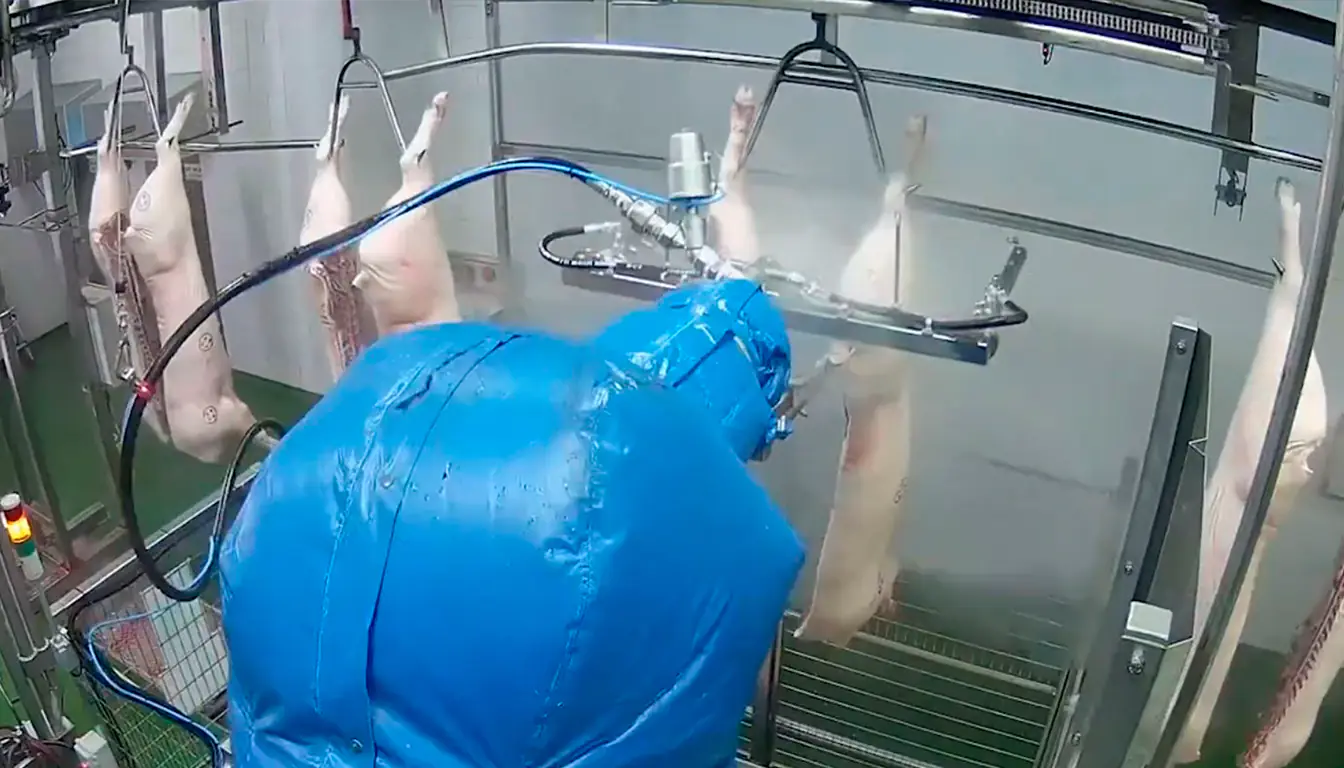
What does it mean to modernise a slaughterhouse?
Modernisation is not limited to replacing old machines with new ones. It is a comprehensive process that encompasses technology, digitisation and efficient management.
Technological renewal and automation
The introduction of robots, automatic cutting systems and state-of-the-art machinery allows more animals to be processed in less time, reducing human error.
Digitisation and traceability
Thanks to management software, each piece of meat can be traced from the animal’s origin to the end consumer.
Process optimisation and cost reduction
The modernization of slaughterhouses also involves making better use of resources, reducing waste and cutting operating costs.
Challenges facing traditional slaughterhouses
Limitations in capacity and performance
Outdated equipment prevents increased production and responds poorly to peaks in demand.
Food safety issues
The lack of advanced control increases the risk of contamination.
Hidden costs due to inefficiency
Old machines consume more energy, water and time, generating expenses that in the long term are much more expensive than investing in technology.
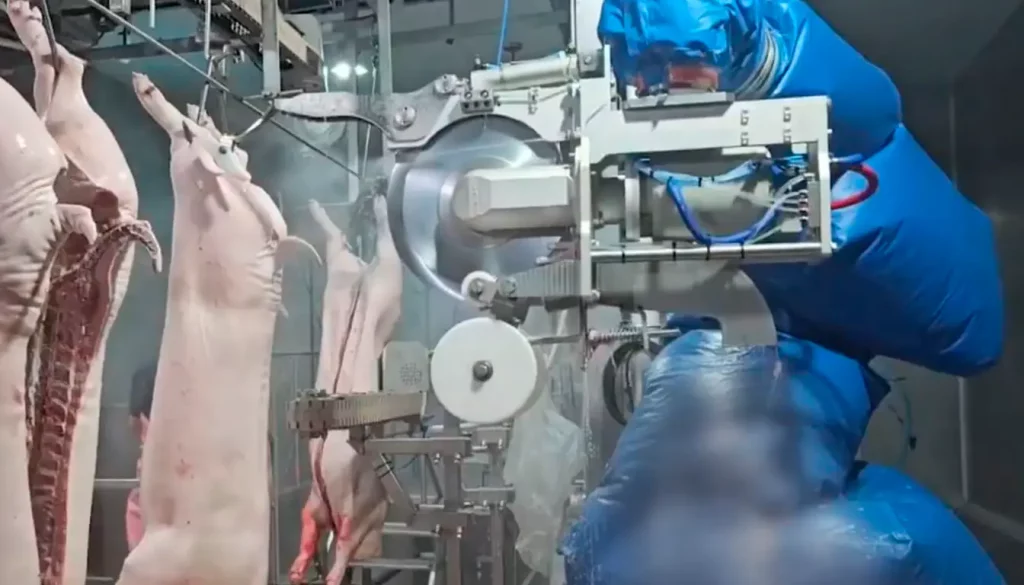
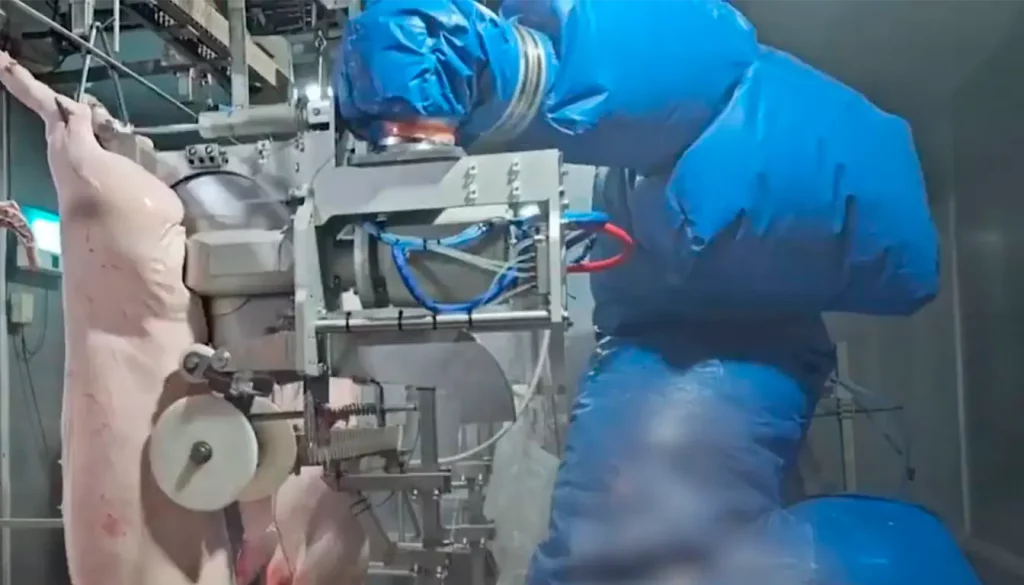
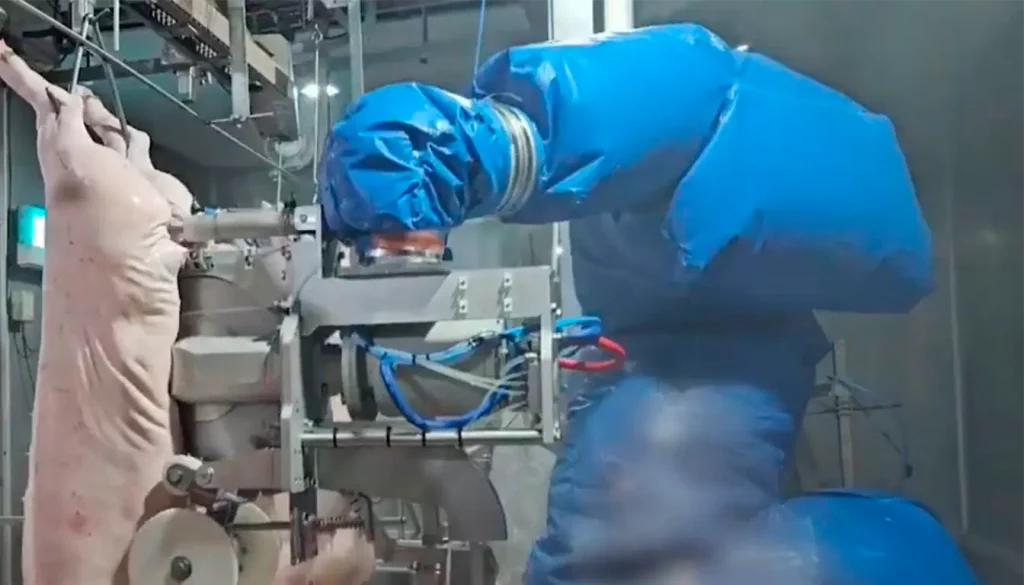
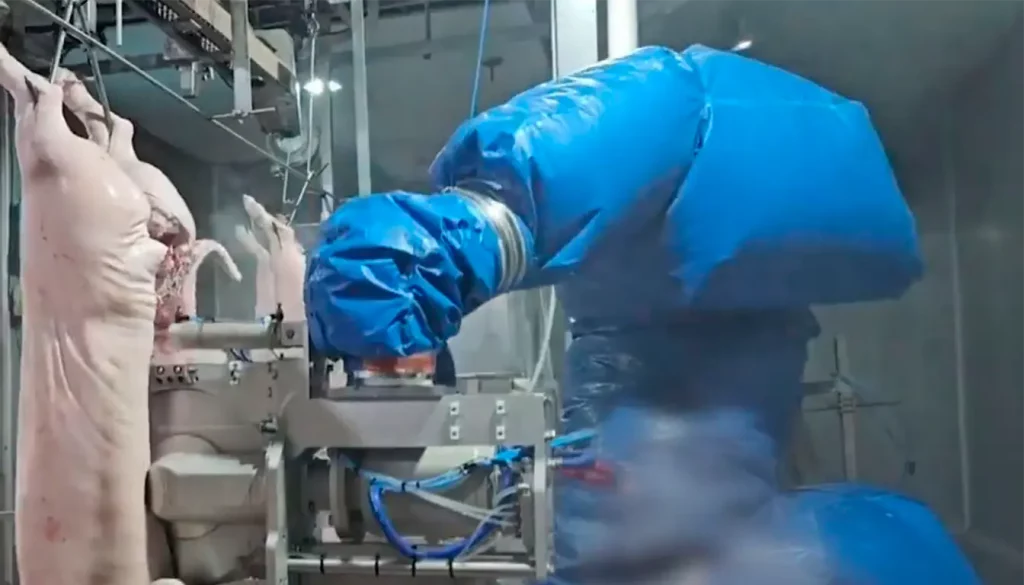
Technology at the service of efficiency
Automation
The automation of slaughtering using robots is here to stay, replacing repetitive tasks and increasing precision. These cutting and sorting robots allow for more accurate cuts, maximising the use of meat.
They maintain high levels of hygiene and reduce human intervention in delicate processes, while real-time control systems detect faults immediately and allow quick decisions to be made to avoid losses.
Sustainability as a driver of change
Reduced water and energy consumption in modern equipment allows for savings of up to 58% in resources. Converting waste into usable by-products is not only profitable, but also environmentally responsible. Environmental regulations are becoming increasingly stringent, and complying with the law is no longer enough: brands must stay ahead of the curve.
The impact on food safety
Advanced hygiene technologies such as sterilisation booths, washing tunnels and sensors ensure a safer product. All this, together with international protocols and certifications, facilitates compliance with standards such as ISO 22000 and HACCP in the modernization of slaughterhouses.
Benefits of modernization for workers
Less physical effort and occupational hazards
Automation reduces heavy and dangerous tasks.
Training in new technologies
Operators become specialised technicians, which improves their professional development.
Attracting and retaining young talent
A modern slaughterhouse is more attractive to younger generations.
Consumers demand transparency
Product traceability from start to finish
With digitalisation, every cut of meat tells a clear and verifiable story.
Adapting to new demands: safer, higher-quality meat
The modernization of slaughterhouses helps to ensure that the final product meets market expectations.
Investment as a competitive advantage
Short- and medium-term return on investment
Although the initial outlay is high, the savings in resources and time quickly pay for themselves.
Access to new international markets
Technology certification opens the door to exports.
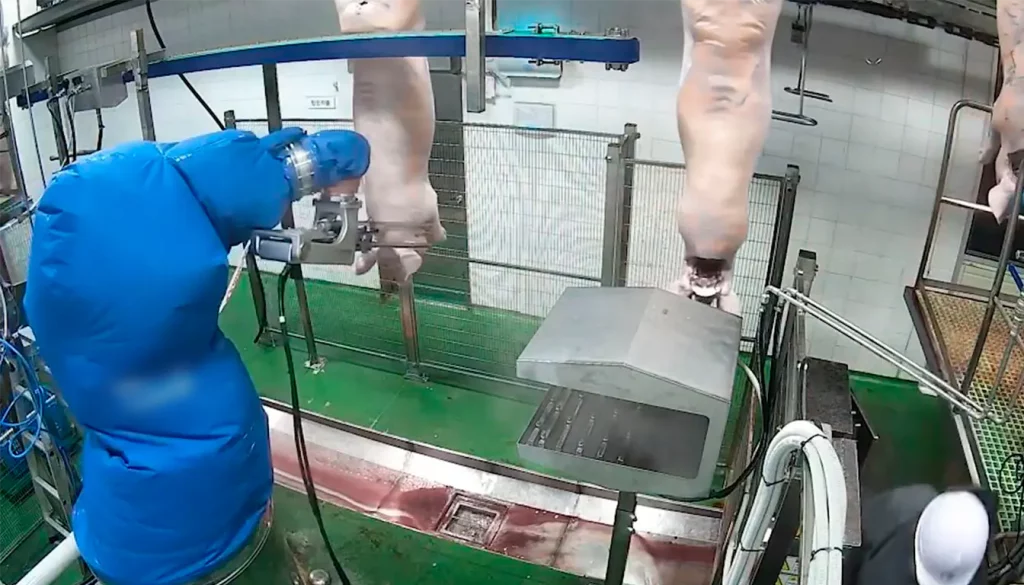
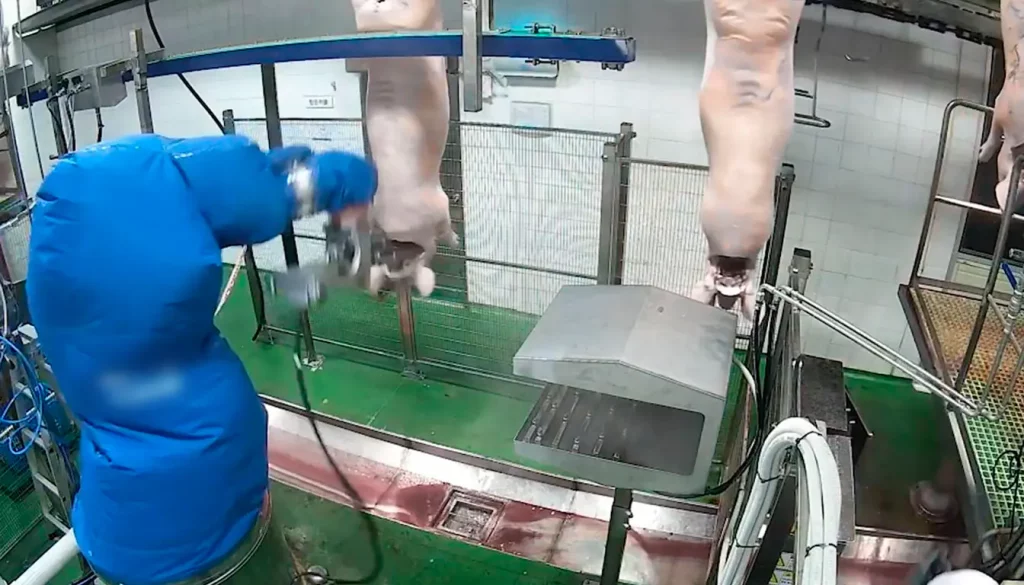
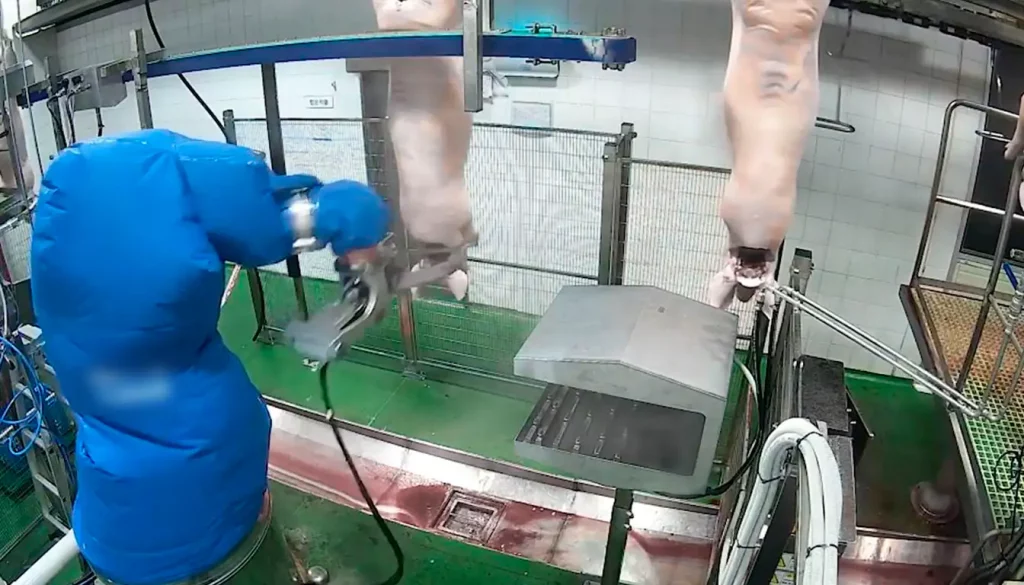
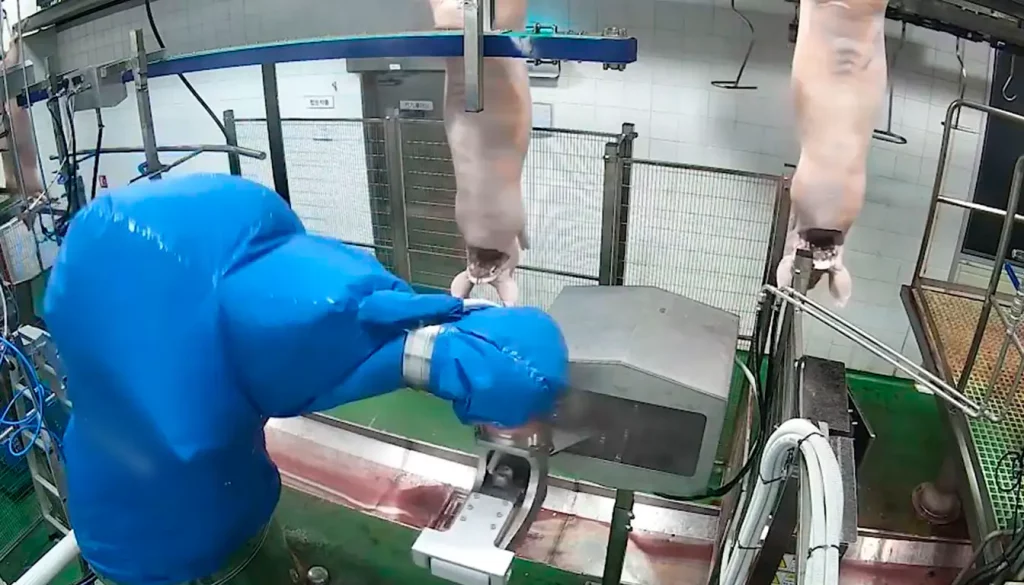
Success stories in the modernization of slaughterhouses
Slaughterhouses that have improved their productivity with technology
Examples show that efficiency can increase by up to 200% with automated processes.
Examples in Europe and Latin America
From Spain to Mexico, via Colombia, Chile and New Zealand, plants that have committed to modernisation are now leaders in their sector.
The future of slaughterhouses: towards Industry 4.0
Thanks to artificial intelligence and Big Data, demand forecasting can be improved and continuous improvement in processes can be achieved with IoT sensors for constant control and monitoring of temperature, humidity and machinery status. Failure prediction and preventive maintenance reduce production downtime and increase equipment life.
Obstacles to the modernization of slaughterhouses
Initial investment
This is the main obstacle, especially for small and medium-sized slaughterhouses.
Resistance to change
Many business owners are still wary of technology.
Lack of qualified personnel
Training is key to getting the most out of the investment.
Strategies for successful slaughterhouse modernization
Phased planning
There is no need to change everything at once; you can move forward step by step.
Collaboration with specialised suppliers
Partnering with experts guarantees better results.
Adaptation to every size of abattoir
There are modular solutions that allow both large plants and small abattoirs to be modernised.
The modernization of slaughterhouses is the only way to survive
The meat industry is undergoing a profound transformation. Slaughterhouses that fail to adapt will fall behind their better-prepared and more efficient competitors. Modernisation is no longer an option: it is the difference between survival and extinction. Technology, sustainability and efficiency are now the three pillars that will shape the future of the sector.
